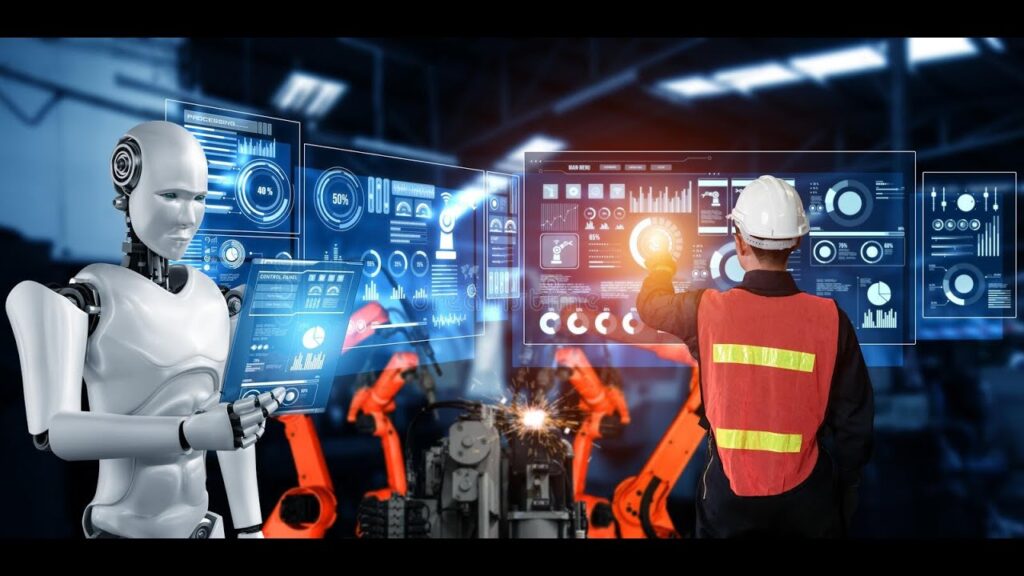Industrial robots have revolutionized the way we perceive automation and manufacturing processes. With their robotic arms and versatile movements, these machines are able to perform a wide range of tasks in various industries. In this article, we will delve into the world of industrial robots, exploring their different types, reviewing their advantages and disadvantages, and discussing their impact on the manufacturing landscape.
*Types of Industrial Robots*
Industrial robots come in various types, each designed to perform specific tasks and cater to different industries’ needs. Let’s take a closer look at some of the most common types of industrial robots:
1. Articulated Robots:
Articulated robots are the most widely used type of industrial robots due to their flexibility and range of motion. They have multiple joints in their arms, allowing them to move freely and perform complex tasks with precision. These robots excel in applications such as welding, material handling, and assembly.
2. Cartesian Robots:
Cartesian robots, also known as gantry robots or rectilinear robots, operate on a three-axis system. They move in a linear fashion along the X, Y, and Z axes, making them suitable for tasks that require precise, repetitive movements. These robots are commonly found in applications like pick and place operations and high-speed packaging.
3. SCARA Robots:
SCARA robots, which stands for Selective Compliance Assembly Robot Arm, are commonly used in assembly operations where high speed and precision are essential. SCARA robots have a horizontal arm with several joints and can move horizontally and vertically. They are ideal for tasks such as material handling and assembly line operations.
4. Delta Robots:
Delta robots are known for their exceptional speed and precision in pick and place applications. They consist of three arms connected to a central base and are used extensively in the food and beverage industry. Delta robots not only increase productivity but also enhance product quality, making them a valuable asset in manufacturing processes.
*Advantages and Disadvantages*
Like any technological innovation, industrial robots have their advantages and disadvantages. Let’s explore both sides of the coin:
Advantages:
1. Increased Efficiency: Industrial robots can work tirelessly and at a faster pace than their human counterparts, leading to increased productivity and efficiency in manufacturing processes.
2. Enhanced Safety: By taking over hazardous and repetitive tasks, industrial robots reduce the risk of accidents and injuries in the workplace. This not only improves safety but also boosts employee morale.
3. Improved Quality: Robots are capable of performing tasks with exceptional precision and accuracy, resulting in consistent product quality. This leads to higher customer satisfaction and reduces the likelihood of defective products.
4. Cost Savings: Although the initial investment in industrial robots can be expensive, it often pays off in the long run. Robots can work 24/7 without the need for breaks or vacations, reducing labor costs and increasing overall profitability.
Disadvantages:
1. High Initial Cost: Acquiring and implementing industrial robots can be costly, especially for small and medium-sized enterprises. This financial barrier may prevent some companies from incorporating these machines in their production lines.
2. Limited Flexibility: Industrial robots are designed for specific tasks and may not easily adapt to changes or new product designs. This limitation can hinder their versatility in certain manufacturing environments.
3. Unemployment Concerns: The rise of industrial robots has raised concerns about potential job losses. While robots can replace repetitive and hazardous tasks, they still require human operators and technicians for maintenance and programming.
4. Complexity: Operating and programming industrial robots require specialized knowledge and skills. Companies may face challenges in finding qualified personnel or incur additional training costs for existing employees.
In conclusion, industrial robots have significantly transformed the manufacturing landscape, offering greater efficiency, safety, and improved product quality. The different types of industrial robots cater to various industries and tasks, providing flexibility and precision. While they have their advantages, including increased productivity and cost savings, they also present challenges such as high initial costs and potential job displacement. As technology continues to advance, the integration of industrial robots will likely become more prominent, leading to further advancements in automation and manufacturing processes.
Industrial Robot
“Exploring the Pros and Cons of Industrial Robots: Reviewing Types, Advantages & Disadvantages in Manufacturing”


